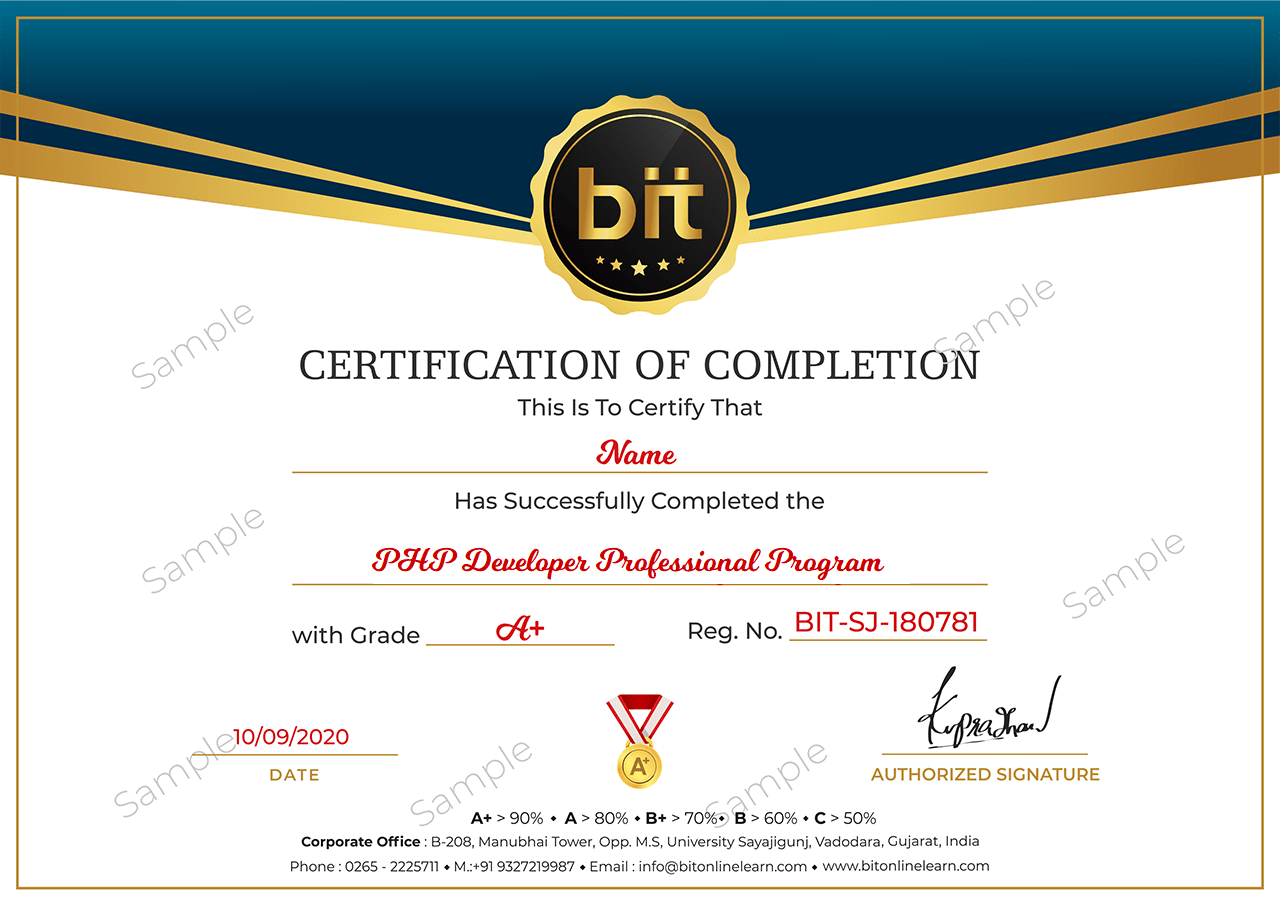· Introduction to php
· Practical Exercise


Start new career with PHP Online Training. We have industrial experts focusing on giving 100% project-based practical training which will help them with their employability. The professional web developers will learn to develop a PHP Web applications using PHP and MySQL tools and technologies. The focus will be on coding activities that enhance the performance and scalability of the Web site application.
PHP stands for Personal Home Page. It is a server-side scripting language used for dynamic and interactive web page development. This scripting language is embedded with the HTML source document. Most of the Web servers are deployed by PHP. Active Server Page (ASP) is a competitor of PHP. This Course is designed from basic to advance level topics for Web page development based on IT industry requirement. From this course, you will learn PHP coding, MySQL, jQuery, AJAX, Content Management System (CMS) tools, many other concepts that are required in the industry for employability as a PHP Developer.
BIT offers an immersive comprehensive and interactive PHP Web Development training that will help you achieve mastery in the use of the framework. You will learn all about the individual components, their features and use, and will be able to develop robust and interactive applications using this development platform. This course is designed for non-programmers, and beginners with less than 6 to 12 months of software-development experience, who want to learn the basics to advance level of the PHP Web Development. This includes web designers who want to use PHP to build commercial websites.

Instructor LED Training
Project Work & Assignment
Certification & Job Assistance
|| About Full Stack Web Development Master's Program
This is a combo course of development courses. Full Stack Developers are developers that design complete app...
Copyright Bitonlinelearn © 2021. All Rights Reserved | Design and Developed By BITINFOTECH